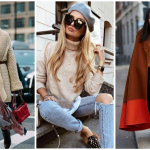Sustainable fashion is no longer just a trend; it’s a movement that continues to gain momentum year after year. As we move into 2024, the fashion industry is witnessing an evolution towards more eco-friendly and socially responsible practices. From innovative materials to circular fashion initiatives, consumers and brands alike are embracing sustainability like never before. In this article, we’ll delve into the top sustainable fashion trends that are set to make waves in 2024.
Circular Fashion
Circular fashion, also known as the circular economy model, focuses on creating a closed-loop system where products are designed, produced, and recycled or upcycled to minimize waste. In 2024, we’ll see an increasing number of fashion brands adopting circular practices, such as offering repair services, implementing take-back programs, and utilizing recycled materials in their collections. This shift towards circularity not only reduces environmental impact but also encourages consumers to rethink their relationship with clothing.
Regenerative Agriculture
Regenerative agriculture is gaining attention as a sustainable farming practice that not only minimizes environmental harm but also seeks to improve soil health and biodiversity. In the fashion industry, regenerative agriculture plays a crucial role in the production of natural fibers like cotton, hemp, and linen. By supporting brands that prioritize regenerative farming practices, consumers can contribute to the preservation of ecosystems and the mitigation of climate change.
Plant-Based and Lab-Grown Materials
The demand for plant-based and lab-grown materials is on the rise as consumers seek alternatives to traditional animal-derived fabrics like leather and silk. In 2024, we’ll see advancements in the development of cruelty-free materials made from sources such as mushroom leather, pineapple fiber (Piñatex), and lab-grown silk. These innovative materials offer the aesthetic and functional qualities of traditional fabrics while reducing the environmental impact of fashion production.
Slow Fashion
In contrast to fast fashion’s rapid turnover of trends and cheaply made garments, slow fashion promotes mindful consumption and durable, timeless pieces. In 2024, the slow fashion movement will continue to gain traction as consumers prioritize quality over quantity and seek out brands that prioritize ethical production practices, fair wages, and transparency. From capsule wardrobes to clothing rental services, there are numerous ways for consumers to embrace slow fashion and build a more sustainable wardrobe.
Zero-Waste Design
Zero-waste design is a design approach that aims to minimize waste at every stage of the fashion production process, from pattern cutting to garment construction. In 2024, we’ll see designers embracing innovative techniques such as pattern manipulation, upcycling, and modular design to create clothing with minimal environmental impact. By reimagining traditional design methods, zero-waste fashion challenges the notion of waste and encourages creativity in the pursuit of sustainability.
Transparency and Traceability
Transparency and traceability are becoming increasingly important for consumers who want to make informed choices about the products they purchase. In 2024, we’ll see more fashion brands embracing transparency by sharing information about their supply chains, production processes, and environmental impact. By providing access to this information, brands empower consumers to support ethical and sustainable practices and hold companies accountable for their actions.
Genderless Fashion
Genderless fashion, also known as unisex or gender-neutral fashion, challenges traditional notions of gender identity and expression. In 2024, we’ll see a growing number of brands offering gender-inclusive clothing options that cater to a diverse range of body types and style preferences. By breaking down gender barriers in fashion, these brands promote inclusivity and empower individuals to express themselves authentically.
Community-Centric Brands
Community-centric brands prioritize collaboration, inclusivity, and social impact within their local or global communities. In 2024, we’ll see more fashion labels embracing this approach by partnering with artisans, cooperatives, and marginalized groups to create unique collections that celebrate cultural diversity and traditional craftsmanship. By supporting these brands, consumers not only gain access to one-of-a-kind pieces but also contribute to sustainable livelihoods and cultural preservation.
Blockchain Technology for Transparency
Blockchain technology has the potential to revolutionize transparency and traceability within the fashion industry by providing an immutable record of transactions and supply chain data. In 2024, we’ll see fashion brands increasingly adopting blockchain solutions to track the journey of garments from raw materials to finished products. By leveraging blockchain technology, brands can enhance transparency, combat counterfeit goods, and ensure ethical sourcing and production practices.
Conscious Consumption Apps
Conscious consumption apps empower consumers to make more informed and sustainable purchasing decisions by providing access to ethical and eco-friendly fashion options. In 2024, we’ll see the proliferation of apps that offer features such as product sustainability ratings, brand transparency scores, and personalized recommendations based on individual values and preferences. These apps serve as valuable tools for navigating the complex landscape of sustainable fashion and promoting conscious consumerism.
Biodegradable Packaging
As awareness of plastic pollution grows, there is a growing demand for biodegradable and compostable packaging solutions within the fashion industry. In 2024, we’ll see more brands transitioning away from traditional plastic packaging towards alternatives such as compostable bags, recycled paper, and plant-based materials. By prioritizing biodegradable packaging, brands can minimize their environmental impact and contribute to the reduction of plastic waste in landfills and oceans.
Upcycling and DIY Fashion
Upcycling and do-it-yourself (DIY) fashion offer creative alternatives to traditional consumption patterns by repurposing old or discarded garments into new and unique creations. In 2024, we’ll see a resurgence of interest in upcycling and DIY fashion as consumers seek to express their individuality while minimizing waste. From clothing swap events to online tutorials, there are countless opportunities for individuals to explore their creativity and contribute to a more sustainable fashion ecosystem.
Fashion Rental and Swapping Platforms
Fashion rental and swapping platforms provide an alternative to traditional retail by allowing consumers to borrow or exchange clothing items for a limited time period. In 2024, we’ll see the continued growth of rental and swapping platforms, driven by consumer demand for more sustainable and affordable fashion options. These platforms offer benefits such as access to designer clothing, reduced wardrobe clutter, and lower environmental impact compared to traditional retail models.
Climate-Positive Fashion
Climate-positive fashion goes beyond carbon neutrality to actively sequester carbon dioxide from the atmosphere through regenerative farming practices and carbon offsetting initiatives. In 2024, we’ll see more fashion brands committing to climate-positive goals by measuring and reducing their carbon footprint while investing in projects that restore ecosystems and mitigate climate change. By prioritizing climate-positive strategies, brands can align with the urgent need for climate action and inspire positive change within the industry.
Conclusion
As we look ahead to 2024, the sustainable fashion landscape is filled with promise and potential. From circular fashion initiatives to regenerative agriculture practices, the industry is undergoing a transformation towards greater environmental and social responsibility. By embracing these sustainable fashion trends, consumers can not only reduce their ecological footprint but also support a more ethical and equitable fashion industry for generations to come.


No Comment! Be the first one.